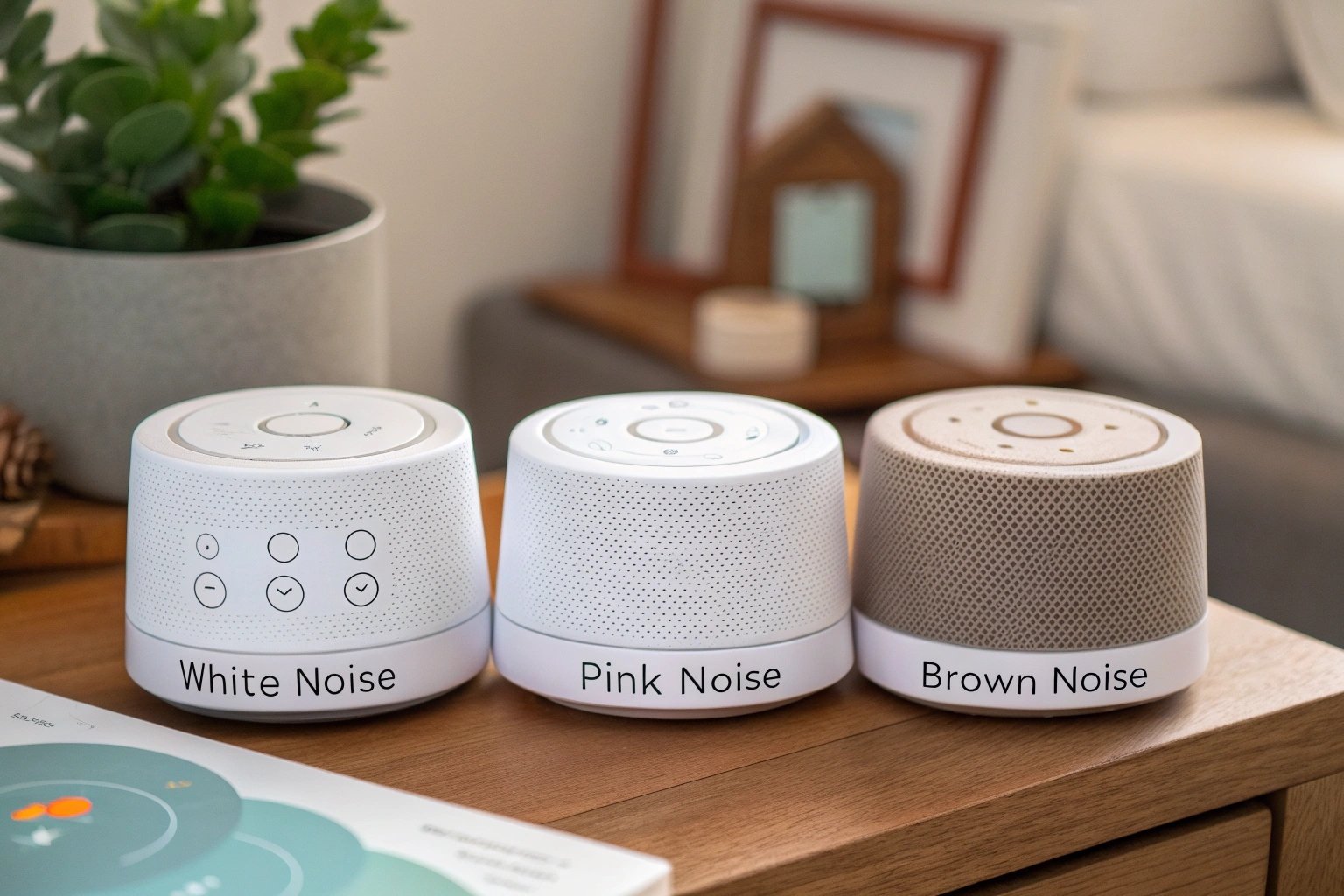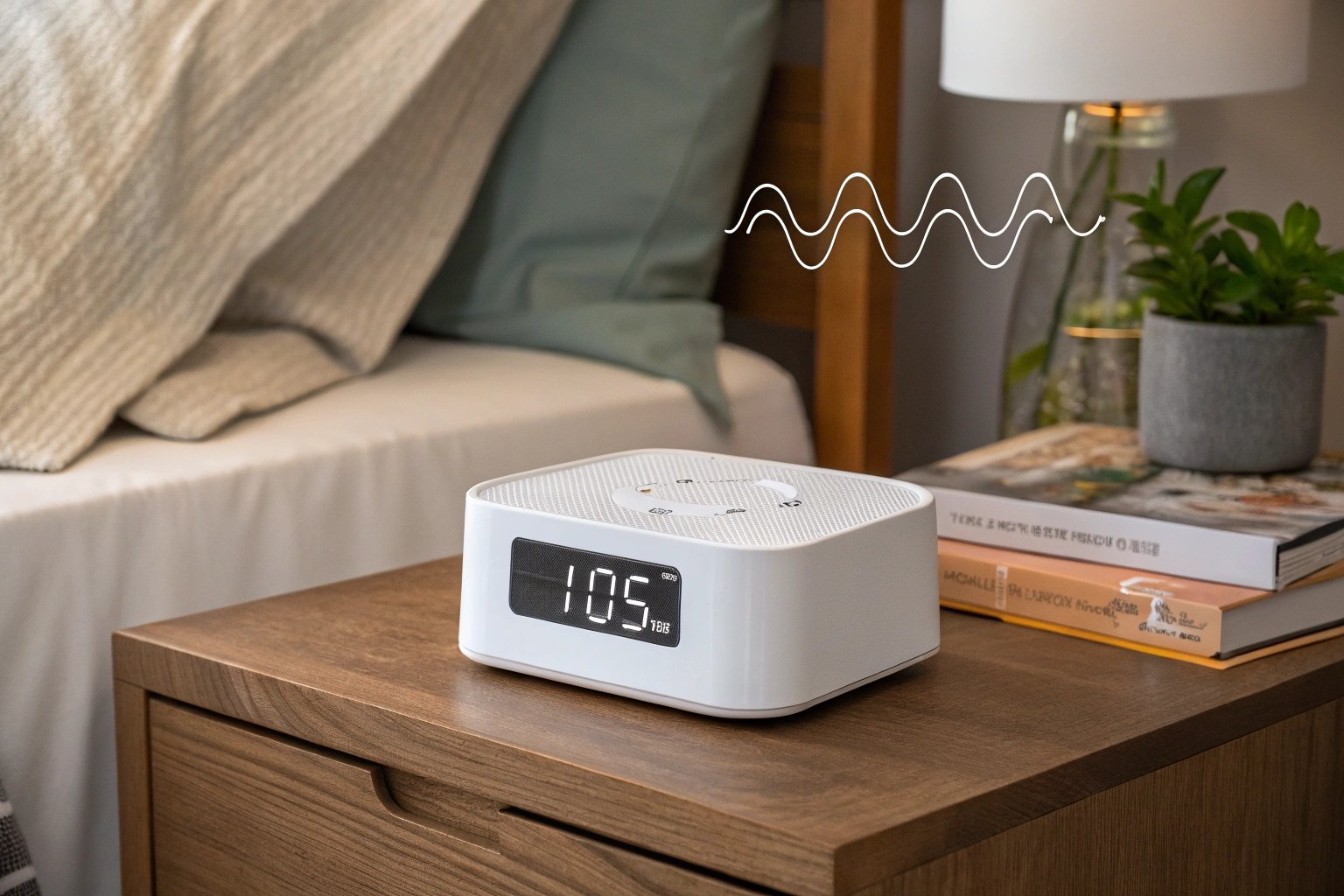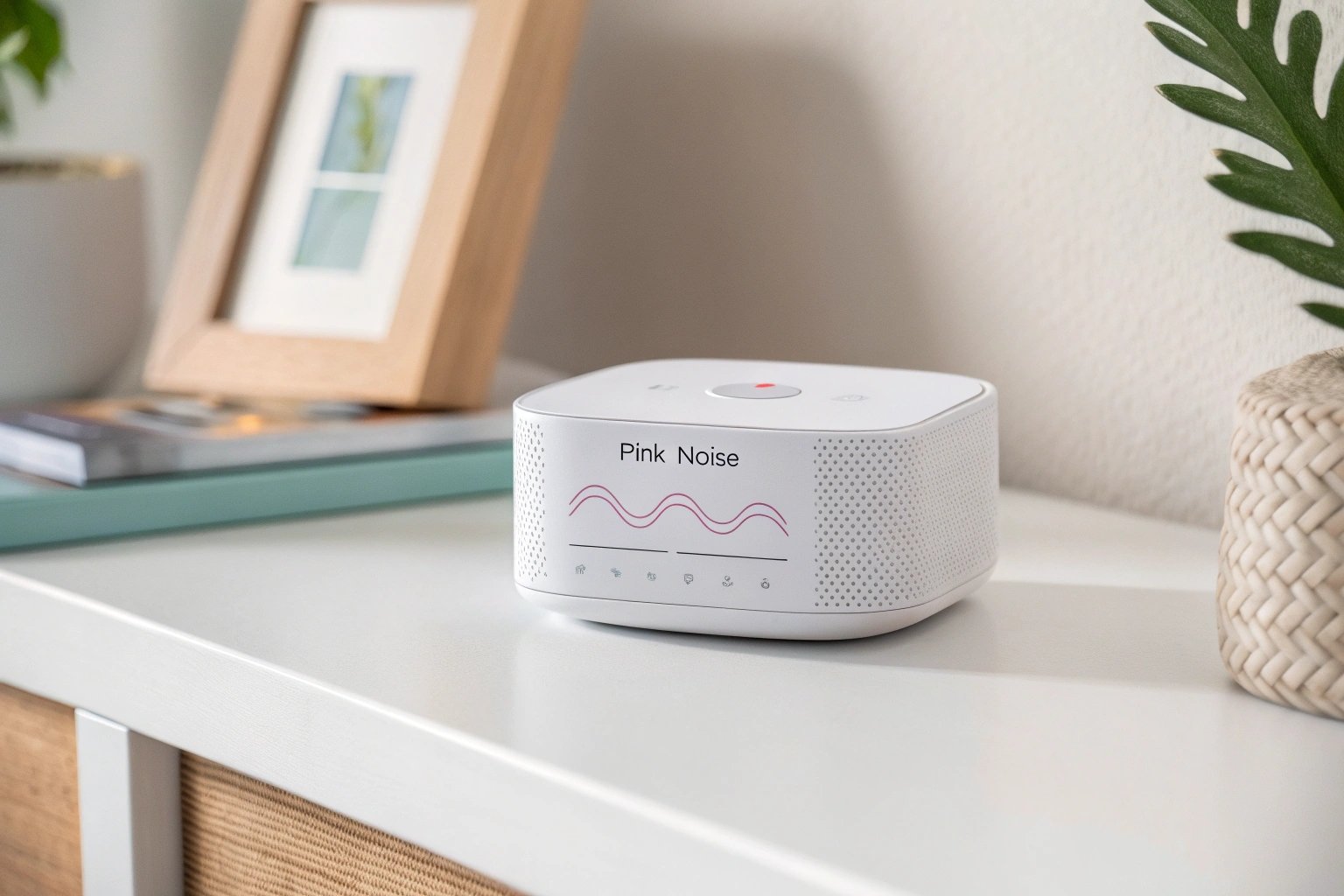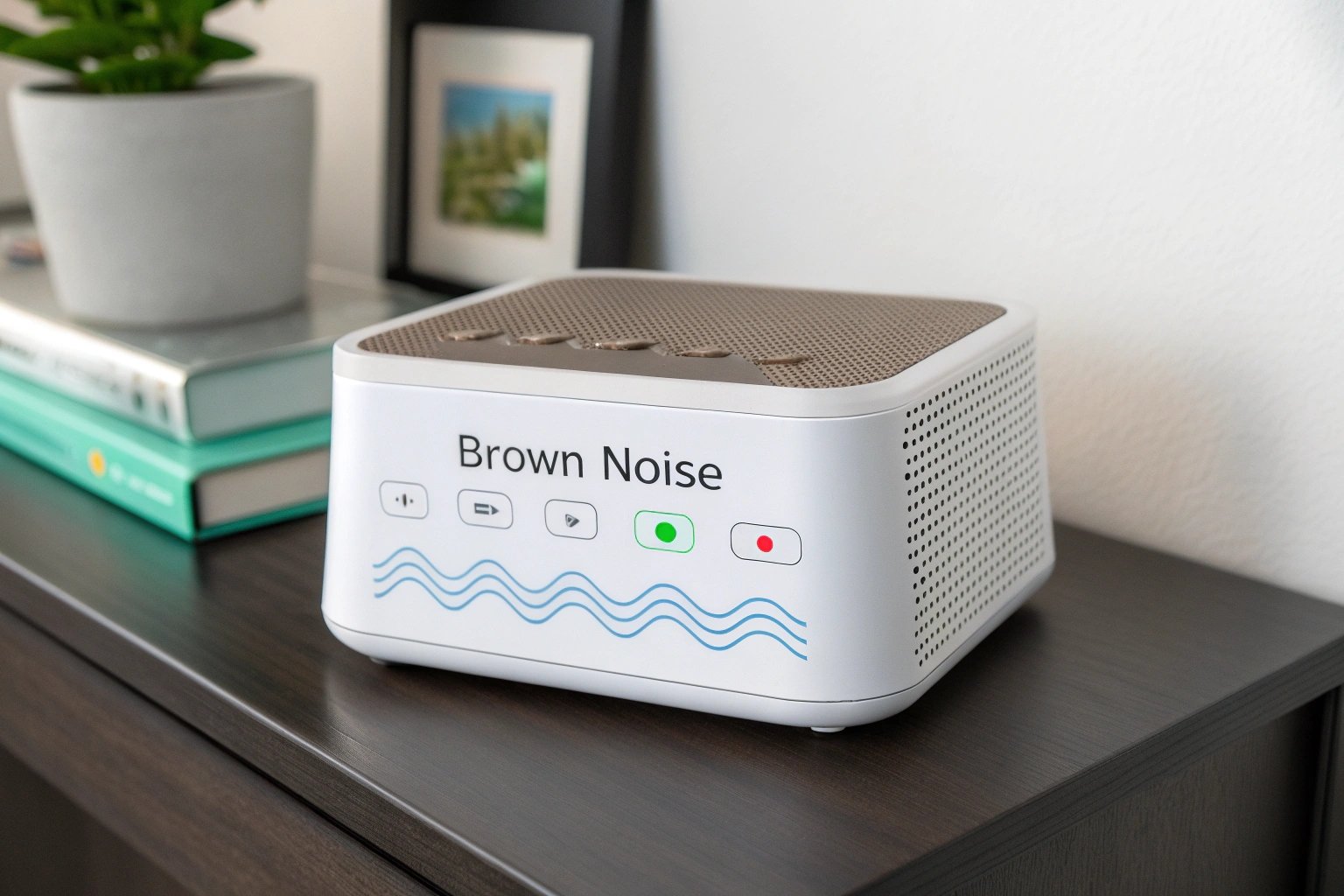White noise is a popular sound used for improving sleep, reducing anxiety, and enhancing focus. But did you know that not all white noise is the same? There are different types of noise—white, pink, and brown—each with its own unique characteristics. Understanding these differences can help you choose the right type of noise for your needs.

In this article, we’ll explore the three main types of noise—white, pink, and brown—and how each of them affects the environment and your body.
What is White Noise?
White noise is the most common type of noise that people use for sleep or concentration. It contains equal intensity across all frequencies within the range of human hearing, typically between 20 Hz and 20,000 Hz.

White noise sounds like a steady "hiss" or static noise, similar to the sound of a radio tuned to an unused frequency or the hum of an air conditioner. It creates a consistent sound environment that masks background noise, making it ideal for blocking out distractions.
White noise is beneficial because it can mask external sounds, making it easier to fall asleep or focus. The constant, unvarying sound prevents the brain from reacting to changes in noise levels, helping people maintain focus or relaxation. Many people use white noise to drown out sounds like traffic, conversation, or even snoring.
What is Pink Noise?
Pink noise, also known as 1/f noise, has more energy in the lower frequencies compared to white noise. In other words, pink noise has equal intensity per octave, which means its frequency decreases as the pitch becomes higher. As a result, pink noise sounds deeper and softer than white noise.

Think of the sound of rainfall or wind through trees—that’s similar to pink noise. It has a more balanced, natural feel compared to white noise because it resembles sounds we often hear in nature.
Pink noise is often preferred for sleep and relaxation because its lower frequencies create a soothing, calming effect. It’s less harsh than white noise and can be more comfortable for extended listening periods. Many people find that pink noise is more natural and conducive to sleep, as it resembles the calming sounds of nature.
What is Brown Noise?
Brown noise, also known as red noise, is characterized by even more energy in the lower frequencies than pink noise. It decreases in intensity at a rate of 6 dB per octave as the frequency increases. This makes brown noise sound much deeper than both white and pink noise.

Brown noise resembles the sound of distant thunder, the rumble of an earthquake, or the deep roar of ocean waves. Its deep, bass-heavy sound can be both calming and grounding, providing a sense of comfort and stability.
Brown noise is typically used by people who enjoy deep, low-frequency sounds. It can be helpful for people who are sensitive to higher frequencies or find white noise too sharp. Some individuals use brown noise to help with relaxation, meditation, or even for deep sleep.
White Noise vs. Pink Noise vs. Brown Noise: Key Differences

Here’s a breakdown of the key differences between white, pink, and brown noise:
| Type of Noise | Sound Characteristics | Frequency Distribution | Best For |
|---|---|---|---|
| White Noise | Steady, high-pitched hiss or static noise | Equal intensity across all frequencies | Masking background noise, improving focus |
| Pink Noise | Softer, deeper sound, similar to rainfall or wind | Equal intensity per octave, more energy in lower frequencies | Sleep, relaxation, calming environments |
| Brown Noise | Very deep, bass-heavy sound, similar to distant thunder | More energy in the lowest frequencies | Deep sleep, relaxation, grounding effects |
When to Use Each Type of Noise
- White Noise: White noise is great for blocking out all kinds of background noise. If you need to focus in a noisy environment or if you’re having trouble sleeping due to external disturbances (like traffic or voices), white noise is ideal.
- Pink Noise: If you prefer a gentler sound that still effectively masks distractions, pink noise is a great choice. Its lower frequency content makes it more natural and soothing, especially for people who are sensitive to high-pitched sounds. Pink noise is often used for sleep and relaxation.
- Brown Noise: If you find white noise too sharp or prefer a deeper, more grounding sound, brown noise is the best option. Its deep, bass-heavy tones are perfect for those who enjoy low-frequency sounds, especially for relaxation or deep sleep.
Conclusion
Understanding the differences between white, pink, and brown noise can help you select the best option for your needs. White noise is ideal for masking external sounds and improving focus, pink noise is soothing and natural for sleep, and brown noise provides deep, grounding tones for relaxation. By choosing the right type of noise, you can create an environment that promotes calm, improves sleep, and boosts concentration.
Now that you know the difference between these types of noise, you can pick the one that works best for your sleep routine or work environment.

